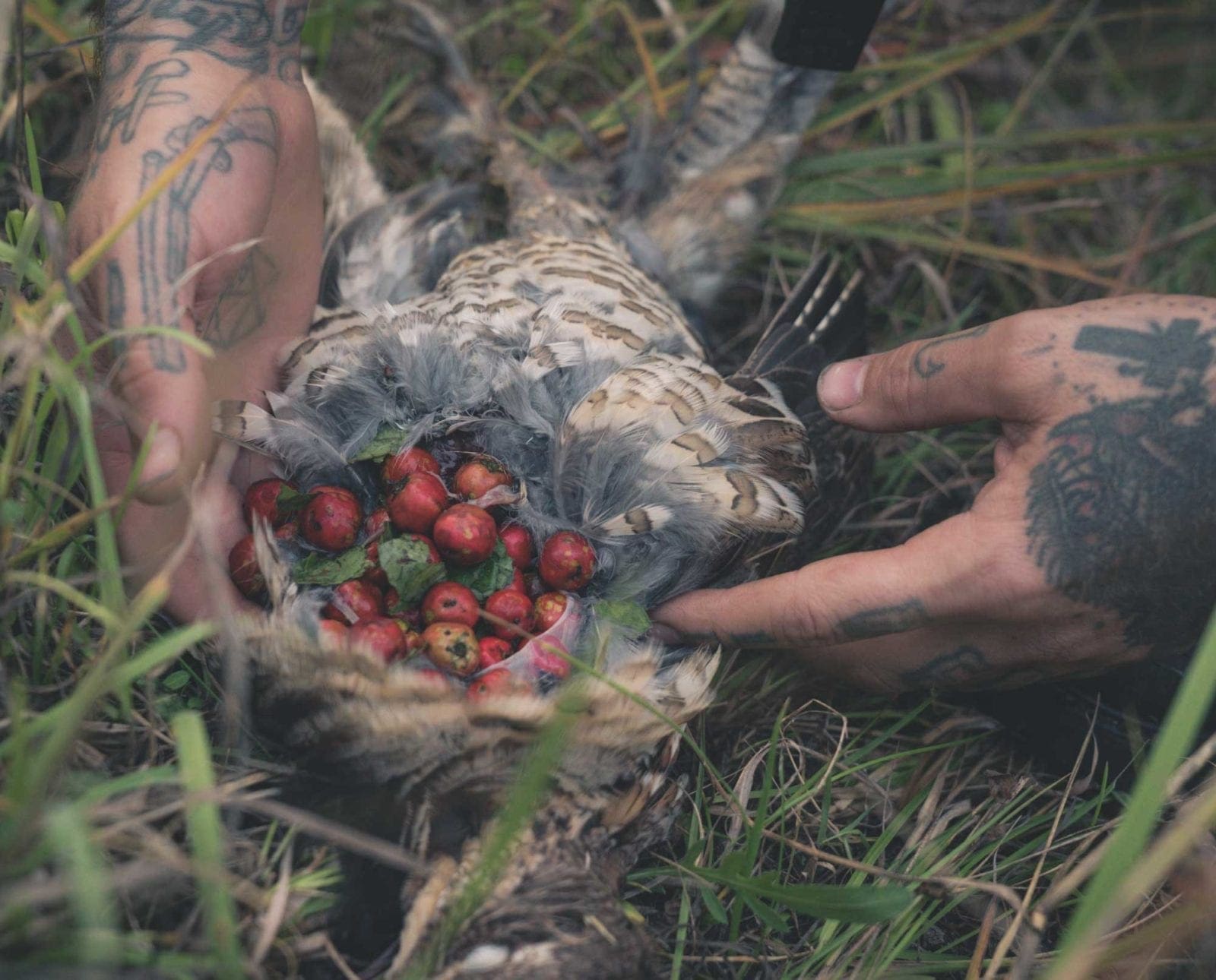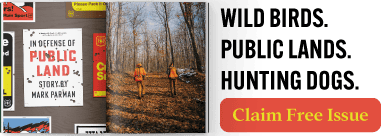Home » Grouse Species » Ruffed Grouse Hunting » Ruffed Grouse Hunting Tip: Know What They Are Eating
Ruffed Grouse Hunting Tip: Know What They Are Eating

A.J. DeRosa, founder of Project Upland, is a New England…
Follow this ruffed grouse hunting advice on slow days in your covers
However predictable we think ruffed grouse are when they feed, it only goes so far. Some days I wake up wanting eggs and bacon while on others it’s cold pizza that calls my name from the fridge. Sure, there is a list of food sources for Grouse, but understanding what particular item is on the menu that day can be challenging. But there is one small catch to this ruffed grouse hunting tip—you need a dead bird.
The saying, “A bird in the hand is worth two in the bush,” has never been so literally true. The “bird in the hand” presents valuable intel as to what is going on that day in the grouse woods. By cutting open the gullet of your first bird, you can see exactly where the rest of his grouse friends are that day.
While filming a Project Upland film in Michigan this past season, we were having trouble getting into the grouse. Then, just like that, we walked up on a single grouse that was almost too heavy to fly because she was in the midst of a feeding frenzy. A quick inspection of her loaded gullet produced a pile of Hawthorn berries. We had discovered our grouse hunting hack of the day.
An hour later, as we worked a cover full of Hawthorns, the action was as heavy as I had ever seen.
Of course, all days do not go as smoothly as I’m recounting here. It’s not exactly a simple thing to find that first grouse, that grouse that’s the key to unlocking the door. So in more severe cases, it might be better to target a list of known food sources rather than pound cover after cover. For that, you need a keen understanding of ruffed grouse habitat. Once you see the action pick up, be sure to make a note of what food sources are surrounding the cover. That will be the first clue to helping get the first grouse in hand.
To anyone new to the grouse hunting game, also note that a lack of water can play a significant factor in empty covers. It’s not always the subject of food. In drier seasons, water sources abutting grouse covers like beaver ponds, streams, and brooks can reap similar results. Unlike the pizza I craved this morning, I always need water to live.
A.J. DeRosa, founder of Project Upland, is a New England native with over 35 years of hunting experience across three continents. His passion for upland birds and side-by-side shotguns has taken him around the world, uncovering the stories of people and places connected to the uplands. First published in 2004, he wrote The Urban Deer Complex in 2014 and soon discovered a love for filmmaking, which led to the award-winning Project Upland film series. A.J.'s dedication to wildlife drives his advocacy for conservation policy and habitat funding at both federal and state levels. He serves as Vice Chair of the New Hampshire Fish & Game Commission, giving back to his community. You can often find A.J. and his Wirehaired Pointing Griffon, Grim, hunting in the mountains of New England—or wherever the birds lead them.




This article looks good on paper but there are two things wrong: 1.Grouse eat almost 600 different items, and 2. 95% of grouse hunters can’t identify more than three or four of the crushed mess in the crops. After 65 years + grouse hunting I found exam of the crops a waste of time, but good luck with your efforts. We know where to look for hawthorns, acorns, and those few items one can identify in the crushed mess and we check out those spots first.